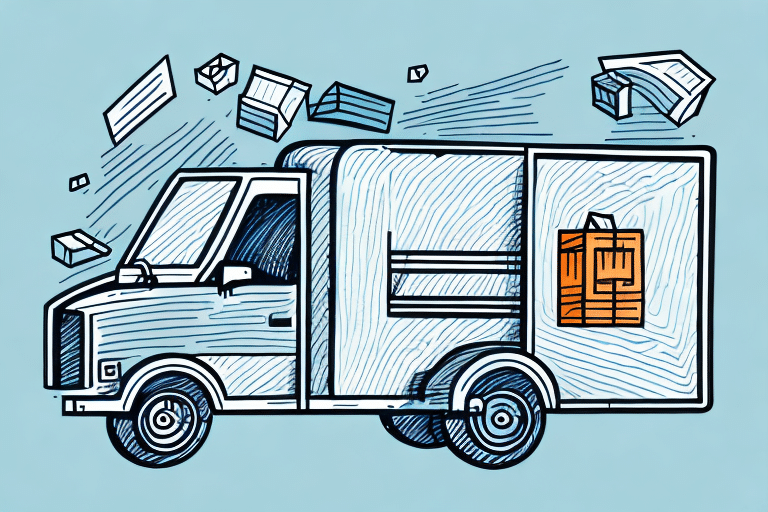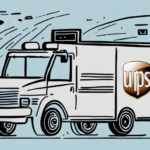Understanding the Factors that Affect Shipping Costs
Estimating shipping costs accurately requires a comprehensive understanding of various factors that influence the overall expense. These factors not only determine the base rate but also impact the additional charges that may apply. By analyzing these elements, both businesses and individuals can make informed decisions to optimize their shipping strategies.
Distance Between Sender and Receiver
The distance your package needs to travel is a primary determinant of shipping costs. Generally, the farther the distance, the higher the transportation fees. For instance, shipping domestically within the United States is typically less expensive than international shipments due to shorter transit times and fewer logistical complexities.
According to the United States Postal Service (USPS), shipping rates increase with distance brackets, which categorize how far a package must travel. Understanding these brackets can help in selecting the most cost-effective shipping options.
Package Weight and Dimensions
The weight and size of your package significantly influence shipping costs. Carriers often use dimensional weight pricing, which considers both the package's weight and its dimensions to calculate the shipping fee. Lightweight but bulky packages might be charged more than smaller, heavier ones.
For example, UPS provides detailed guidelines on how dimensional weight is calculated, ensuring that customers are aware of how their package's size can affect the cost.
Packaging Materials
The choice of packaging materials can impact both costs and shipping efficiency. Durable and appropriately sized packaging reduces the risk of damage, potentially lowering insurance costs and avoiding additional fees for repairs or replacements.
Investing in quality packaging, such as corrugated cardboard boxes and protective fillers like bubble wrap, can minimize damages and ensure safe delivery. Some carriers offer discounts for using specific packaging materials that meet their standards.
Delivery Speed and Service Type
The desired delivery speed plays a crucial role in determining shipping costs. Standard shipping services are generally more affordable but take longer to deliver, while expedited services like overnight or two-day delivery come at a premium.
According to FedEx, expedited services are ideal for urgent shipments but require careful consideration of budget constraints.
Seasonal and Regional Variations
Shipping costs can fluctuate based on seasonal demand and regional factors. During peak seasons such as holidays, increased shipping volumes can lead to higher rates and potential delays.
Additionally, shipping to remote or underserved areas may incur additional fees due to limited transportation options. Planning shipments during off-peak times can help mitigate these cost increases.
Choosing the Right Shipping Service and Carrier
Selecting the appropriate shipping service and carrier is essential for balancing cost, speed, and reliability. Different carriers offer varied services tailored to specific needs, and understanding these offerings can lead to more efficient shipping operations.
Types of Shipping Services
Shipping services range from standard to expedited options, each catering to different delivery timelines and budgetary requirements. Standard services are cost-effective for non-urgent shipments, while expedited services are suitable for time-sensitive deliveries.
For example, UPS offers a range of services including Ground, 3 Day Select, and Next Day Air, each with distinct delivery windows and pricing structures.
Comparing Carrier Rates and Services
Different carriers offer unique rates and services, making it imperative to compare options before making a decision. Factors to consider include base rates, additional fees, delivery speed, tracking capabilities, and customer service quality.
Tools like the FedEx Rate Tool and UPS Rate Calculator allow users to compare rates across various services and carriers, facilitating informed choices.
Negotiating Discounts and Loyalty Programs
Businesses that ship frequently can benefit from negotiating discounts with carriers or enrolling in loyalty programs. High shipping volumes often qualify for reduced rates, while loyalty programs can offer perks such as free shipping or priority handling.
For instance, USPS Business Select provides discounted rates for bulk shipments and access to premium services, enhancing cost-efficiency for regular shippers.
Packaging Strategies to Optimize Shipping Costs
Effective packaging strategies are vital for minimizing shipping costs while ensuring the safe delivery of packages. By optimizing package size, weight, and materials, shippers can reduce expenses and enhance operational efficiency.
Selecting Appropriate Packaging Materials
Choosing the right packaging materials not only protects the contents but also influences shipping costs. Using materials that are lightweight yet durable can help in maintaining a balance between protection and cost.
Carriers like FedEx offer guidelines on recommended packaging materials to ensure compliance and cost-effectiveness.
Minimizing Package Size and Weight
Reducing the size and weight of packages can lead to significant savings. Utilizing compact packaging that snugly fits the product minimizes dimensional weight charges and reduces shipping fees.
Employing techniques such as nesting items or using collapsible packaging can further decrease the overall package size and weight.
Sustainable and Eco-Friendly Packaging
Eco-friendly packaging not only benefits the environment but can also lead to cost savings. Utilizing recycled materials or biodegradable packaging options may qualify for carrier discounts and appeal to environmentally conscious consumers.
According to the Environmental Protection Agency (EPA), sustainable packaging practices contribute to reduced waste and lower overall shipping costs.
Utilizing Online Tools and Resources for Accurate Cost Estimation
Leveraging online tools can streamline the process of estimating shipping costs, allowing for more precise budgeting and efficient shipment planning.
Shipping Cost Calculators
Most carriers offer online shipping calculators that help estimate costs based on package dimensions, weight, origin, and destination. These tools provide quick and accurate cost assessments, facilitating better decision-making.
For example, the UPS Shipping Calculator allows users to input specific package details to receive instant rate quotes across various services.
Tracking and Managing Shipments
Online tracking tools enable customers to monitor their shipments in real-time, providing visibility into the delivery process and helping to manage expectations.
Platforms like FedEx Tracking offer comprehensive tracking features that enhance transparency and customer satisfaction.
Automating Shipping Processes
Automation tools integrated with shipping platforms can optimize package routing, printing labels, and managing inventories, reducing manual efforts and minimizing errors.
Solutions such as ShipStation offer robust automation features that streamline the shipping workflow for businesses of all sizes.
Insurance and Liability Considerations in Package Delivery
Understanding insurance and liability coverage is essential to protect against potential losses or damages during the shipping process. Proper coverage ensures that both senders and recipients are safeguarded against unforeseen issues.
Understanding Carrier Liability
Carriers typically offer liability coverage up to a certain amount for lost or damaged packages. It's important to be aware of these limits and how they apply to different shipment scenarios.
The USPS Domestic Mail Manual outlines the standard liability coverage provided for domestic shipments, highlighting the importance of declaring the correct package value.
Purchasing Additional Insurance Coverage
For high-value or fragile items, purchasing additional insurance can provide comprehensive protection beyond the carrier's standard coverage.
Services like FedEx Insurance offer extended coverage options, ensuring adequate compensation in the event of loss or damage.
Common Mistakes to Avoid When Estimating Shipping Costs
Accurate cost estimation is crucial for budget management and avoiding unexpected expenses. However, several common mistakes can lead to inaccurate estimates and increased shipping costs.
Inaccurate Weight and Dimension Measurements
Failing to precisely measure the weight and dimensions of packages can result in incorrect shipping rates. Overestimation may lead to unnecessary expenses, while underestimation can incur additional fees.
Using calibrated scales and measuring tools ensures that package details are accurate, preventing discrepancies during the shipping process.
Overlooking Destination-Specific Costs
Shipping to remote or international destinations often involves additional costs such as customs fees, duties, and special handling charges. Ignoring these expenses can inflate the total shipping cost.
Researching destination-specific requirements and costs ahead of time allows for more accurate budgeting and prevents unexpected charges.
Improper Package Labeling
Incorrect or incomplete labeling can lead to delays, misrouting, or even loss of packages. Ensuring that all labels are clear, accurate, and compliant with carrier standards is essential.
Including complete recipient information, handling instructions, and any necessary customs documentation can mitigate the risk of shipping errors.
Insurance and Liability Coverage in Package Delivery
Ensuring adequate insurance and understanding liability coverage are critical aspects of package delivery. This not only protects valuable shipments but also provides peace of mind during the shipping process.
Standard Carrier Liability
Carriers offer basic liability coverage for packages, typically based on the declared value of the goods. However, this coverage may not suffice for high-value items.
For example, UPS provides liability coverage that varies depending on the service type, emphasizing the need to assess whether additional insurance is necessary.
Extended Insurance Options
Extended insurance options provide enhanced coverage for shipments that exceed standard liability limits. This is particularly useful for shipping expensive or fragile items.
Carriers like FedEx offer customizable insurance policies that cater to specific shipping needs, ensuring comprehensive protection.
Negotiating Discounts with Carriers: Tips from Industry Experts
Negotiating discounts with shipping carriers can lead to substantial cost savings, especially for businesses with high shipping volumes. Building strong relationships and understanding carrier pricing structures are key to successful negotiations.
Building Relationships with Carrier Representatives
Establishing a rapport with carrier representatives can facilitate better negotiation outcomes. Regular communication and consistent shipping volumes demonstrate your value as a client, making carriers more likely to offer favorable rates.
Participating in carrier events and engaging with account managers can help in fostering these relationships.
Leveraging Shipping Volumes for Better Rates
Higher shipping volumes provide leverage when negotiating rates. Carriers are often willing to offer discounts to clients that generate significant business, recognizing the mutual benefits of a long-term partnership.
Organizations like NASCargo offer resources and advocacy for leveraging shipping volumes to negotiate better rates with carriers.
Utilizing Loyalty Programs and Shipping Coupons
Many carriers offer loyalty programs and shipping coupons that provide discounts and special offers to frequent shippers. Taking advantage of these programs can lead to ongoing savings.
Programs such as UPS My Choice offer various incentives that can enhance cost-efficiency and service quality.
The Future of Package Delivery: Innovations Impacting Shipping Costs and Efficiency
The package delivery industry is undergoing significant transformations driven by technological advancements. These innovations are poised to revolutionize shipping processes, reduce costs, and enhance delivery efficiency.
Autonomous Vehicles and Drones
Autonomous vehicles and drones are emerging as the future of package delivery, offering the potential for faster and more cost-effective shipping. These technologies can reduce dependency on traditional transportation methods and minimize labor costs.
Companies like Amazon are investing heavily in drone delivery systems, anticipating widespread adoption in the coming years.
Robotics and Automation
Automation in sorting facilities and the use of robots for last-mile delivery are enhancing operational efficiency. Robotics can streamline the handling process, reduce errors, and expedite delivery times.
The implementation of automated systems by carriers such as FedEx demonstrates the tangible benefits of robotics in reducing shipping costs.
Smart Packaging Technologies
Smart packaging integrated with IoT (Internet of Things) devices enables real-time tracking and monitoring of shipments. These technologies provide valuable data that can optimize shipping routes and improve delivery accuracy.
Innovations in smart packaging, such as RFID tags and sensors, are being adopted to enhance transparency and efficiency in the shipping process.
Conclusion
Accurate estimation of package shipping costs involves a multifaceted approach that considers distance, weight, packaging, and service choices. By understanding these factors, selecting the right carriers, optimizing packaging strategies, and leveraging technological innovations, both businesses and individuals can significantly reduce shipping expenses. Additionally, staying informed about industry advancements and effectively negotiating with carriers ensures ongoing cost-efficiency and superior service quality. Implementing these strategies will not only save money but also enhance the overall shipping experience.






















